Cambodian Incursion, 1970 — Part One
By How Miller
Photos courtesy How Miller
Originally published in the May 2021 Sentinel
During the Vietnam War, the North Vietnamese needed ways to arm and supply both their own soldiers as well as aid the Viet Cong in the south. They had a very active smuggling operation going by sea, in river drop-offs, all the way to the Cambodian port of Sihanoukville. Much effort was expended to reduce that by the U.S. and South Vietnamese (RVN) navies, resulting in an estimated 90% reduction of this. That made the North more dependent on land resupply. They found it most profitable to ignore the neutrality of Laos and Cambodia, to the immediate west of the two Vietnams.
Neither country had formidable armies, and the North Vietnamese Army (called NVA by us) had battle hardened cadres, so in 1958, only 4 years after defeating the French, the north started infiltrating men on foot down an already established set of trails. This grew to a supply effort using mainly bicycle and foot traffic. Much of this “Ho Chi Minh Trail” was covered by vegetation and was over rugged terrain. By 1970, despite the best efforts of SOG and the U.S. Air Force, the amount of materials flowing down the now “paved” roads were prodigious. They had built up supply lines and storage depots and also used those bases as refuge for cross border attacks into South Vietnam.
Laos was declared neutral by a peace treaty in 1961. The U.S. largely withdrew our operatives (CIA and SF) as per the agreement, but the North Vietnamese stayed in place and continued to increase its presence and activities. The Lao government was powerless and/or unwilling to stop them.
In Cambodia Norodom Sihanouk, then titled Prince, did not have sufficient forces to resist the North’s occupation of the eastern edge of his country. His “neutral” country tolerated this and he cooperated with Russia, China and North Vietnam. In return, the NVA would respect and not bother Cambodian citizenry. The longer this went on, however, the more intrusive the communists became. The Cambodian armed forces were no match for the overwhelming numbers of battle hardened troops the North Vietnamese had positioned and active in eastern Cambodia.
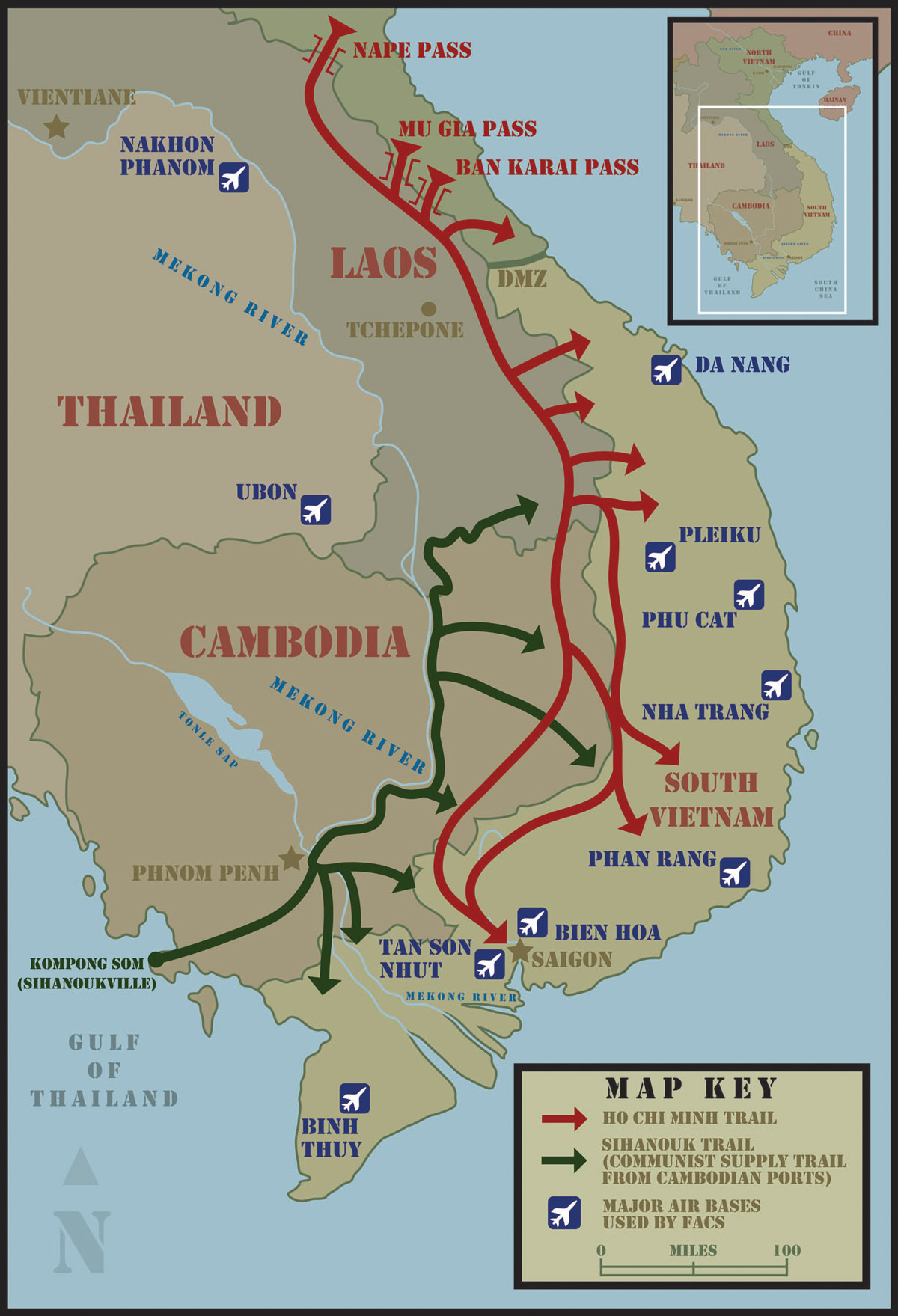
Map showing Ho Chi Minh Trail, Sihanouk Trail and major air bases used by FACs. (U.S. Air Force)
The North also had the “Sihanouk Trail”, multiple routes to deliver supplies that had been shipped to Sihanoukeville on the southwest corner of Cambodia, moving goods east and northeast either to the sanctuaries or through the Mekong delta directly into Vietnam in the Saigon area. On March 18, 1970, while Prince Sihanouk was out of the country for medical treatments, the National Assembly deposed him and appointed Prime Minister Lon Nol as provisional head of state. This came on the heels of an ultimatum by Lon Nol, on 12 March for all Vietnamese communists to vacate Cambodia within 72 hours.
Unintimidated, the NVA began attacking and taking control of several Cambodian provinces and approached to within 15 miles of Phnom Penh. They also began to arm the communist Cambodian insurgents, the Khmer Rouge, which they had previously refrained from doing.
The U.S. was not sure if Lon Nol was going to be friendly to the west, and the U.S. in particular. One of the early overtures by the Cambodians to the U.S. was a visit by a navy ship to the U.S. Navy in Ha Tien, as is nicely described in the novel NILO Ha Tien.
This led initially to our navy providing over 2000 rifles and other arms to the Cambodians to help them repel the NVA, and later to the evacuation of 35,000 ethnic Vietnamese, who were being driven out of the country, many of them by being murdered by the Cambodian Army. That was a joint effort of U.S. and South Vietnamese navies, with the help of the Cambodians.
President Nixon had campaigned in 1968 with a promise to get us “out of the war, with honor.” He built on an already established program of Vietnamization, which was gradually turning the fighting over to the Vietnamese. He greatly accelerated the process along with constant drawdowns of American troops.
When Lon Nol took power Nixon seized the opportunity to enter Cambodia and destroy the supplies that were in the sanctuaries and kill as many of the enemy as possible, giving the south more time to raise their fighting prowess before our projected exit from South Vietnam. And though much materiel was destroyed or removed, the NVA either figured it out, or were tipped off ahead of time and took the best weapons and ammo with them and largely avoided contact with the Vietnamese and American forces. Instead they moved their men and weapons further inland and north to put more pressure on the Cambodian Army.
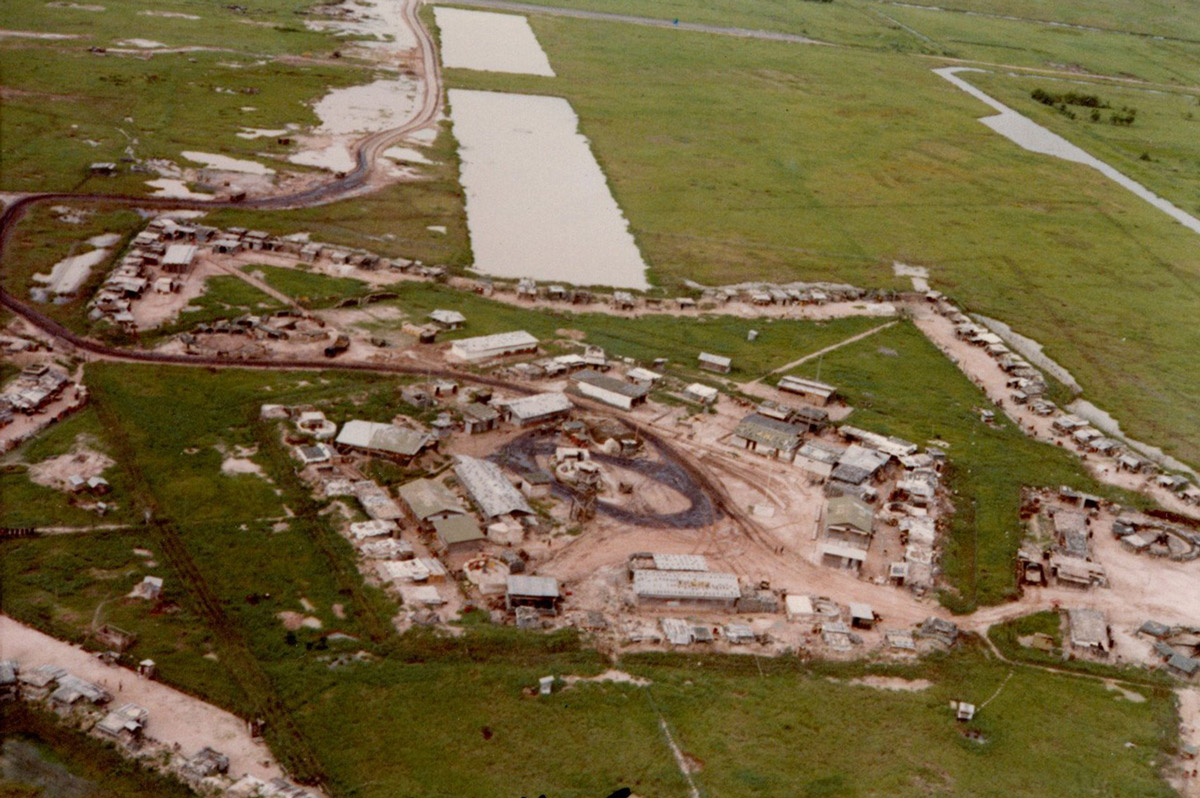
A325 Duc Hue from north aerial 69-70
My A-camp, A325 Duc Hue was positioned near the Cambodian border, a few kilometers east of the Parrot’s Beak, to interfere with the robust smuggling efforts. A326 Tra Cu was to our east on the Vam Co Dong River, collocated with a brown water navy base of the same name. Their missions were similar, with the Navy providing riverine patrolling and SOF insertions.
For you Google Earth aficionados, Duc Hue was an old French star shaped fort at 10°56’06”N 106°12’16”E and Tra Cu was at 10°54’01”N 106°18’55”E, a triangular shaped area at the conjunction of the Vam Co Dong river and a canal. Both can still be discerned on Google Earth. Both of our camps were to the west of Saigon.
At Duc Hue we had one company of Cambodian, and two companies of Vietnamese CIDG, with dependents and various civilian workers — nurses, cook, laundry, interpreters, nurses, and an old tailor/barber who would trim all our tiger striped hat brims and cut our hair. My right hand man, civilian nurse Kim Phuoc, was Cambodian born and spoke Cambodian, Vietnamese and English. He was excited about Lon Nol ascending to power.
Several times per month we would get mortared. Some of it was probably target practice for VC training classes, conducted across the border near Ba Thu, identifiable on the map now only as being near Chan Trea. We had a well-constructed camp, double layered rooves, protected by dirt filled 55 gallon drums and sandbags. So we usually suffered few injuries from the many mortars. But, most patrols would run into some kind of contact. We also had a small detachment of ARVN (Army of the Republic of Vietnam) artillery, which consisted of two 155mm howitzers and crews.
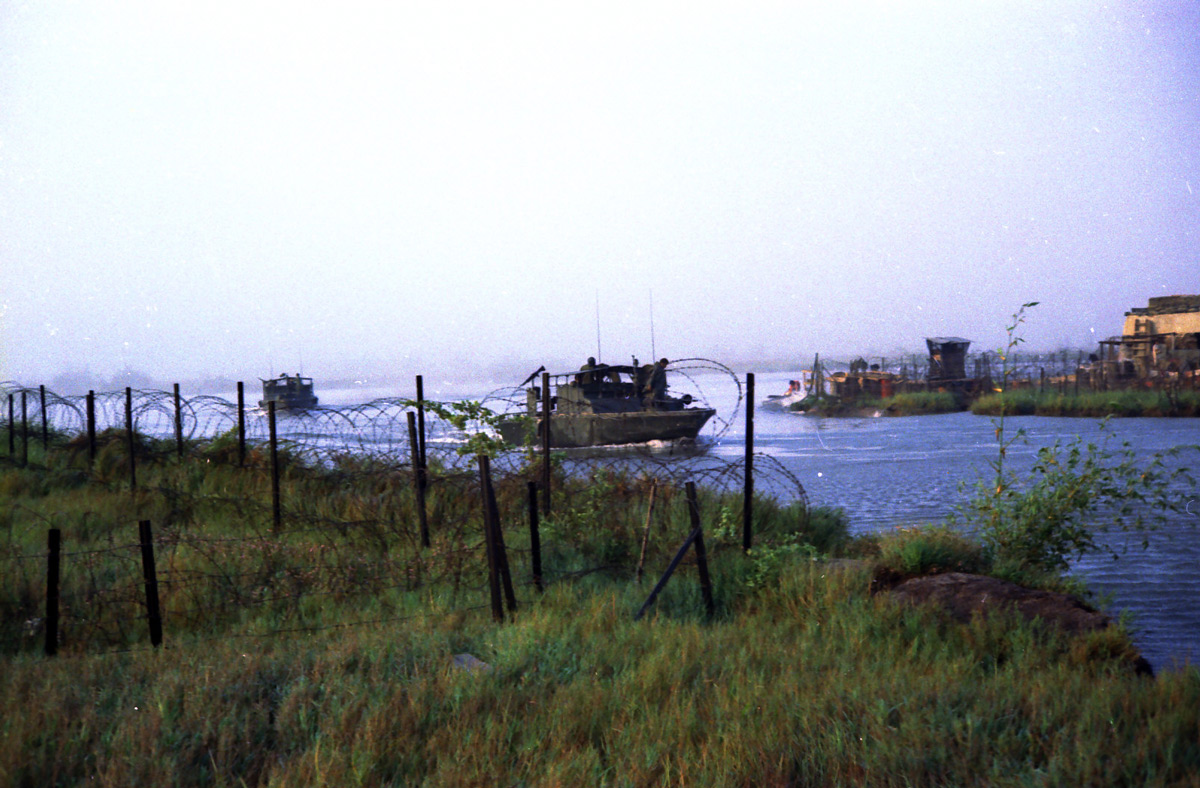
A326 Tra Cu
The Incursion occurred in stages. Starting in mid-March the ARVN made incursions across the Cambodian border of a temporary nature. Then, near the end of April, the ARVN began their incursion in earnest, including a pincer movement from the north into the Angel’s Wing, and from the south into the Parrots Beak area and sweeping west towards Phnom Penh. The American heavy infantry divisions and the ARVN forces drove into Cambodia more substantially, starting about the first of May. This occurred along many sections of the Vietnam-Cambodia border. Most northerly was the U.S. 4th infantry Division west of Pleiku, almost to the Laotian border, and the most southerly was the ARVN crossing near Ha Tien at the southwest corner of Vietnam on the Gulf of Thailand. The locations were dictated by known or suspected munition storage areas and, though the NVA took their best weapons with them (according to almost everyone on the ground), what was captured was estimated to have been about 9 months’ worth of weapons, ammunition, and materials to support the war in the south.
There was also a lot of activity by Special Forces camps and SOG (mostly CCS). When we were alerted to our coming operation, we learned that the ARVN with some Americans had just swept through the Angel’s Wing and the Parrots Beak in the previous days. What we did not know for sure was that the ARVN were sweeping west toward the Phnom Penh area to help save Cambodia from falling to the North Vietnamese. Our combined CIDG operation, comprised of CIDG troops from A325 Duc Hue and our sister A-camp to our east, A326 Tra Cu, began immediately following the ARVN leaving our area.
We inserted in different groupings by Hueys. When my grouping arrived, within about two minutes I was being hailed to take care of a wounded CIDG. He had stepped on a land mine, blowing off most of each of his legs a little below the knees. Fortunately, the CIDG medics had already done an excellent job, applying tourniquets and bandages there. His whole front was also sprayed with shrapnel and he could not see. I cleaned him up a little more and called for a medivac. I was told none were available because of all the casualties the American units were suffering. A Special Forces Colonel had arrived and was assessing the progress on the ground. I don’t remember his name, but I had met him before at the A camp. I explained the situation to him and asked if he could take the CIDG with him back to an appropriate medical facility. To his credit, he only thought about it for a couple of seconds before agreeing. I gave the soldier a syrette of morphine and attached the spent cartridge to his collar so that other medical personnel would know he had gotten a dose. We loaded him on the chopper and shortly thereafter the colonel left. I did not know if the man was going to survive until about 3 months later when I was in Nha Trang out-processing for DEROS. When I walked into the medical facilities at the suggestion of one of the sergeants there, I was greeted with a loud “Bac Si!” from several beds away. He had survived and was happy about it. It was one of the best feelings I have ever had.
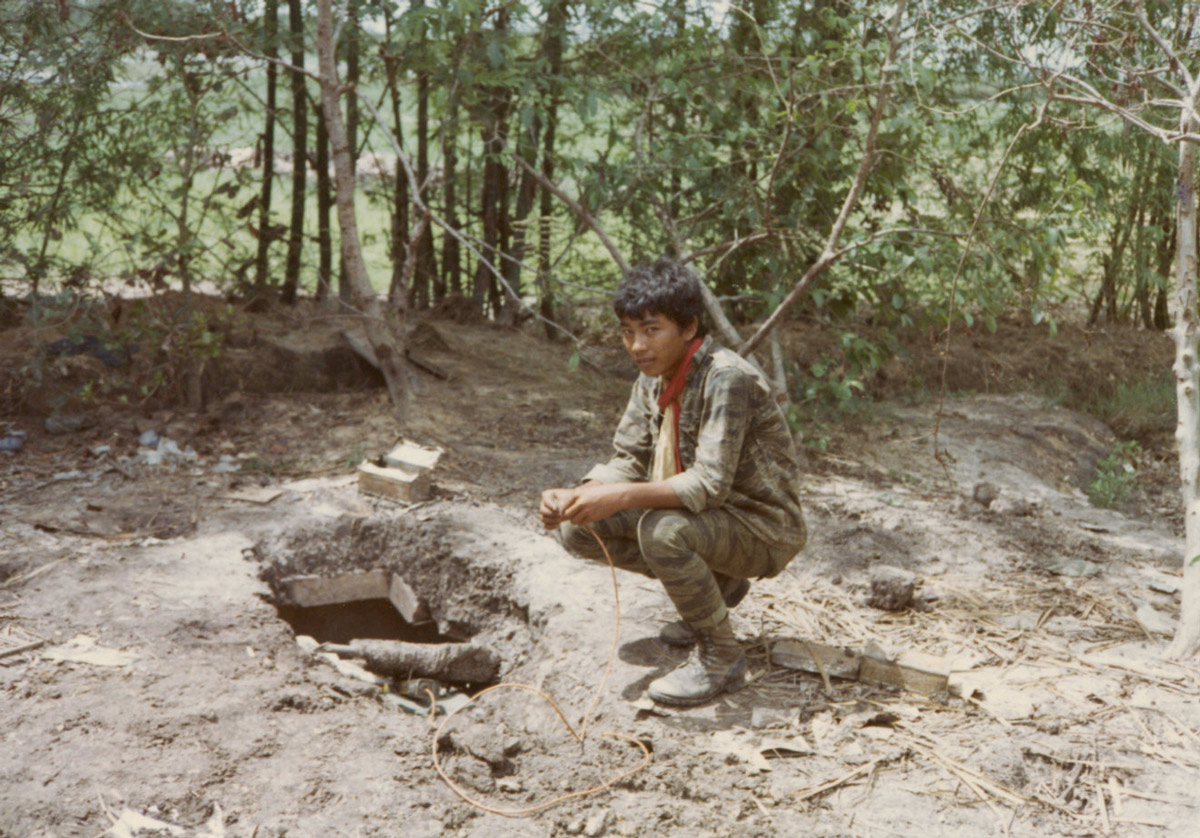
Ba Thu, Cambodia — Cambodian CIDG prepares safety fuse to destroy munitions cache.
The objective of our operation was to secure the area and search for hidden weapons bunkers. While securing the area we encountered numerous “stay behind” enemy troops. This developed into a two to three day engagement. We were able to get fire support from the ARVN 155’s located at Duc Hue and also from a U.S. Cobra helicopter gunship. I remember the Cobra coming in almost directly above us so closely that, had it been daylight, I would have been able to see the pilot’s face as he passed by. At that point our part of the formation was lined up in a ditch for the remainder of the mostly sleepless night.
The next day we had a line formation to attack a “tree” line from which we had been receiving significant fire the previous night and were now receiving sporadic AK47 or machine gun fire. After using the AN/PRC 25 on my back, Captain Shannon, C.O. of A326 Tra Cu, said that the CIDG were not moving, despite orders. So Joe Tylus, our junior radioman who did not speak any Vietnamese, stood up, waved for others to follow him, ran forward about 20 yards and flopped to a prone position on the dry rice patty. I started yelling, with my best beginner level Vietnamese, for half the troops to advance and then cover while the other half advanced. They all looked around as though they did not know what I was saying, but they eventually started moving, along with the rest of us. From that point on, their training kicked in and we assaulted and cleared the objective, losing one KIA. Over the course of the two to three day encounter we suffered 8 friendly KIA and numerous wounded, keeping me busy with both infantry and medical tasks.
Eventually we stopped being harassed by the enemy and settled down for almost two months of securing the territory and searching for and finding rice, weapons, ammo, mines and explosives. What could not be returned to the base, due again to insufficient aircraft being available, we blew in-place. The CIDG diligently searched using probing rods and found most items concealed in paddy dikes or under trap doors, both inside and outside of hooches.
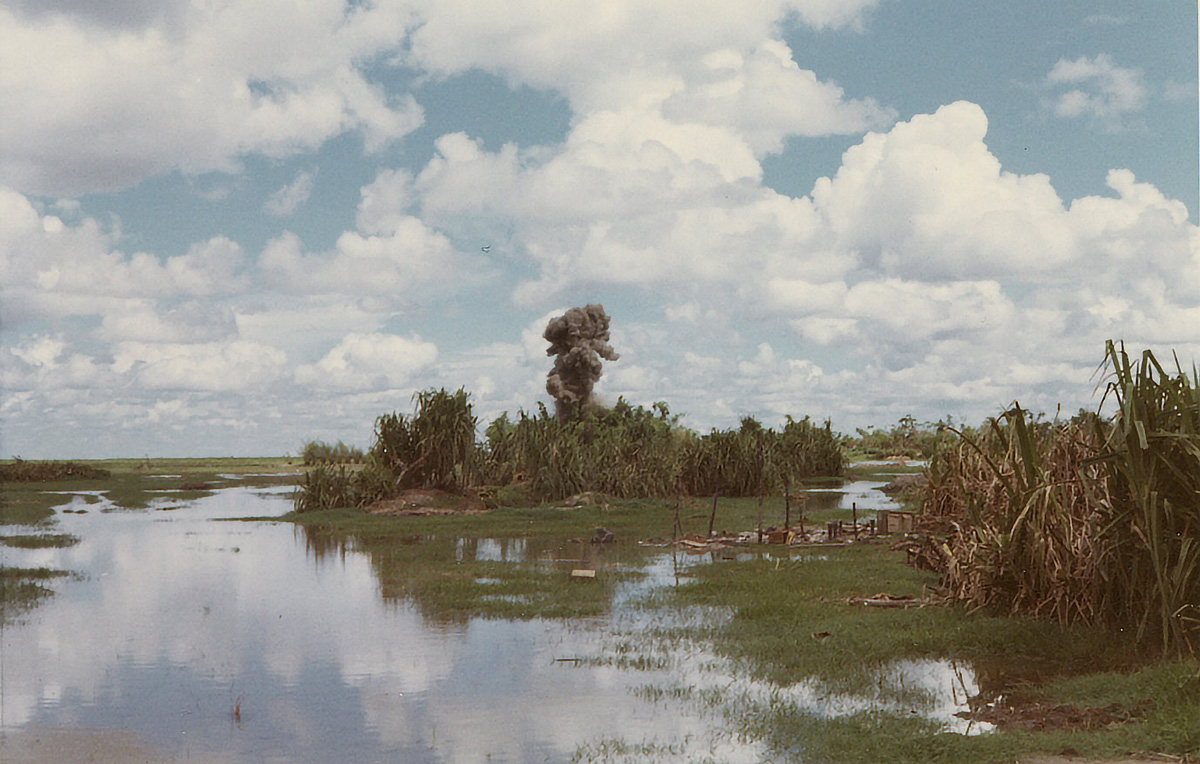
Ba Thu, Cambodia — another munitions cache detonated, May or June 1970
There were no civilians around, so there were no CAP’s/civilian sick calls. What does a medic do in the field when there are few medical problems? Try to be sure the best sanitation is being observed, do some sick calls for the troops, even at one point give some scheduled vaccinations. Then one used the skills he has been most thoroughly cross-trained to do by his Engineer teammate, Jeff Hilton, and blow stuff up. The most useless materials to us were the anti-tank and anti-personnel mines and the explosives that were there in abundance. We wanted to destroy them in place to deny the use of it to the enemy.
What is referred to as “TNT” in the after action reports was actually cubes about 9 or 10 inches in height, wrapped in neatly folded, thick wax paper appearing packages. The explosive was a very light tan color and a damp clay consistency. They were stacked up to ten high in these underground storage chambers.
So first we removed the recoilless rifles and their rounds. These were still cosmolined and marked with Chinese characters. The rifles were mostly Chinese versions of the Russian semi-automatic SKS, sometimes called CKCs, which were typically loaded with 10 rounds of 7.62mm x 39mm rounds, the same that the AK47 uses. It was similar in appearance to our M14 rifle and M60 machine gun ammo. These rifles were far inferior to the AK47s, which is why they were left behind. One could use it if that was all that was available, but by that point AK47s were nearly ubiquitous. They had been coming down the Ho Chi Minh trail from the north, and the Sihanouk trail from the southwest in great abundance, at this point by the truckload.
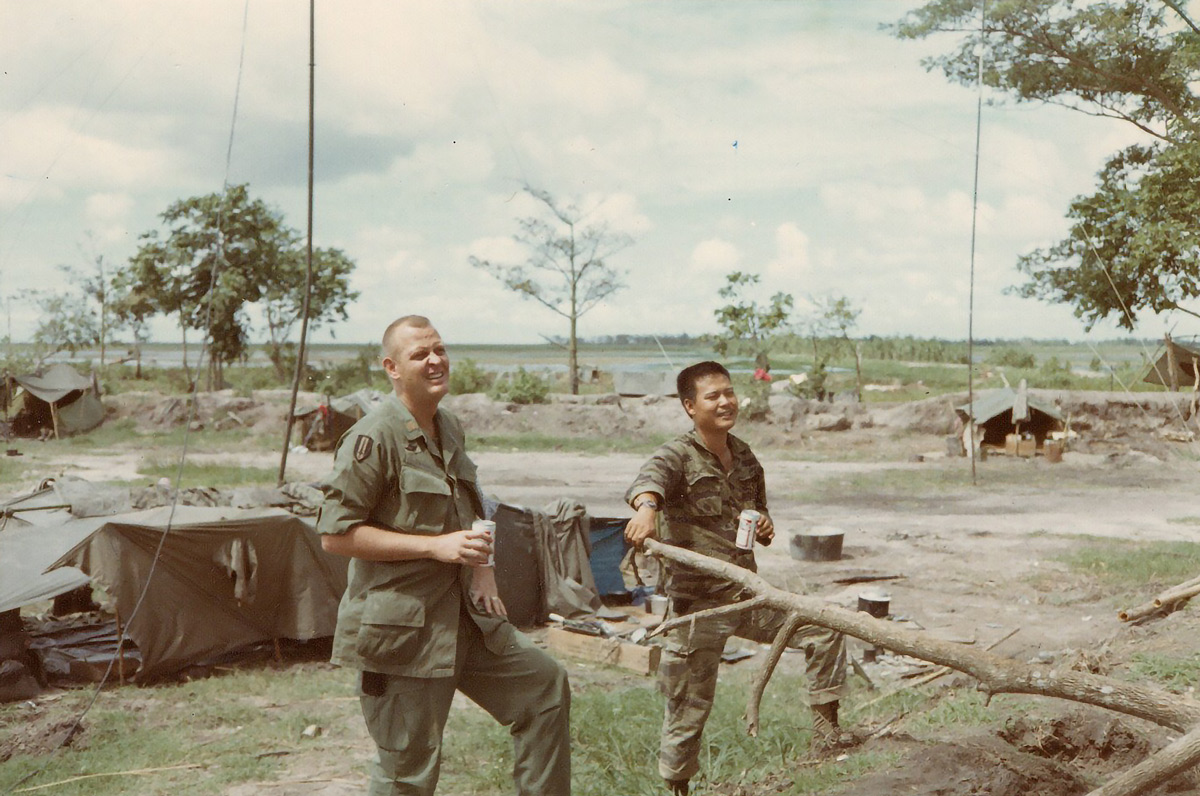
Maj Denom B32, Dai Huy (CPT) Hai , Duc Hue C.O. LLDB
Some of these SKSs ended up being good trading material for our rear area troops, and I even got an export license and took one back home with me. They were also handy in that they each had a fold-down star configuration bayonet (as opposed to a blade shape, as the Russian and Eastern European versions had). Also there were machine guns, RPG launchers, and mortars — all with the appropriate ammo — and booby traps and even a lot of shovels.
I took one of the CIDG with me who had some experience with explosives and we proceeded to blow up some of these caches. I let him do the honors of igniting the safety fuses after we rigged the C4, det cord, and blasting caps together.
It was very satisfying, since the VC and NVA had been able to cross back over the border to their safe havens after mortaring the hell out of our camp on so many occasions. In addition we knew the destruction of their supplies would help keep the enemy from killing as many of our indigenous and allied friends, as well as Americans.
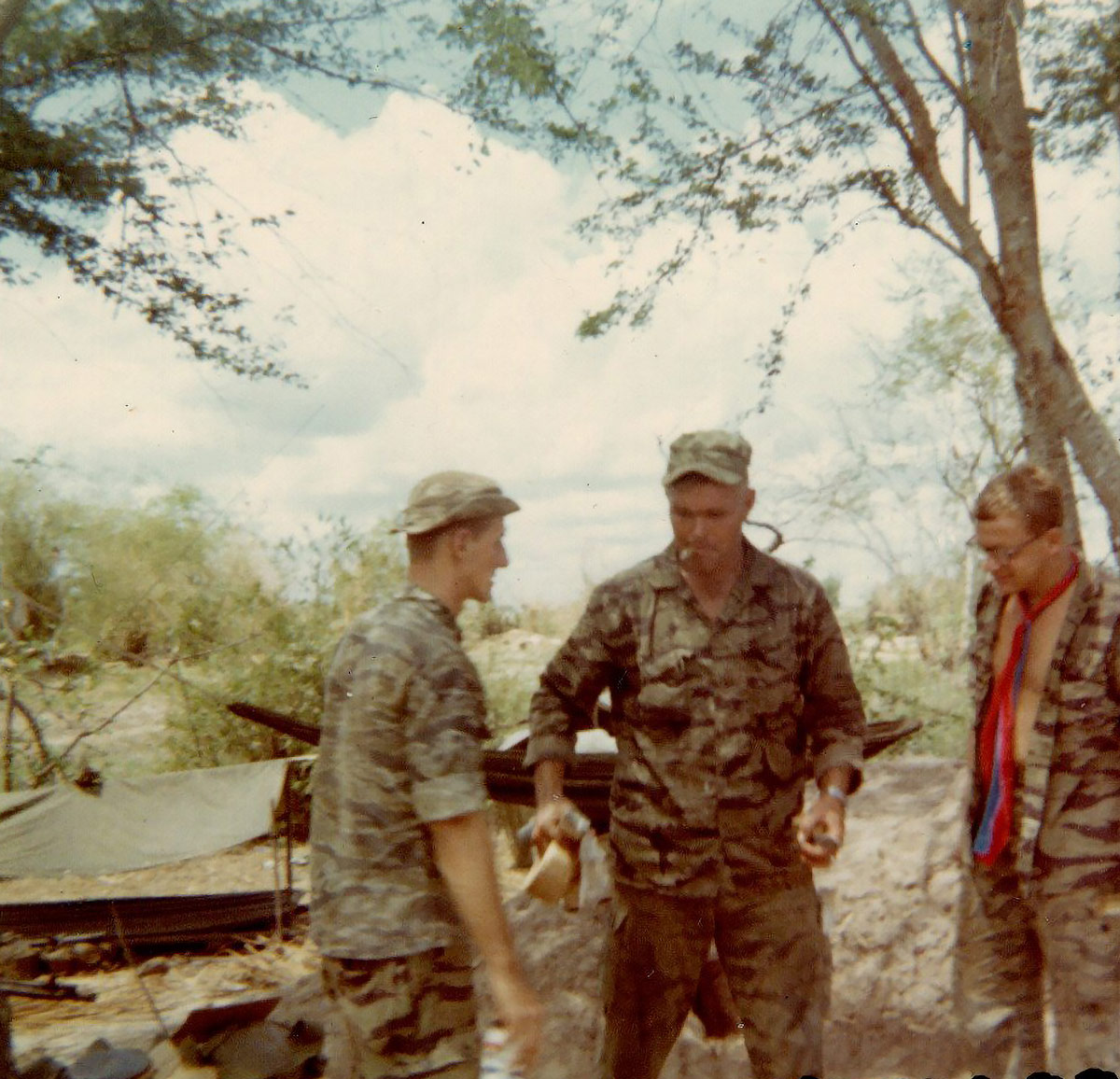
Left to right How Miller Duc Hue, CPT Shannon Tra Cu
At some point during a quiet time, I was approached by a group of 6 or 8 CIDG who stood in front of me in a semicircle. They were all quiet, as though they were about to do something solemn. One of them handed me something and explained that they themselves had dug it up and they wanted me to have it. It turned out to be something of intrinsic as well as sentimental value. It was a Foo Dog that is placed beside the entryway to a house. They often come in a pair, one Foo Dog is holding down a pup under a paw. The other, which is what they gave me, is holding down a globe. At the time I was only thinking of the honor they were bestowing upon me. I rather awkwardly thanked them as best I could in Vietnamese and they all smiled and left. Much later I discovered that the black hard surface was a protective coating and the Foo Dog was actually made of bronze and was, of course, one of my most prized possessions.
Meanwhile, lots of others were taking part — from the ARVN, U.S. Infantry and Airforce, and the U.S. and Vietnamese Navy and SF A camps in the south, to SOG, the ARVN, U.S. and Vietnamese air forces, and U.S. infantry and many Special Forces A camps in and around the northern part of Cambodia.
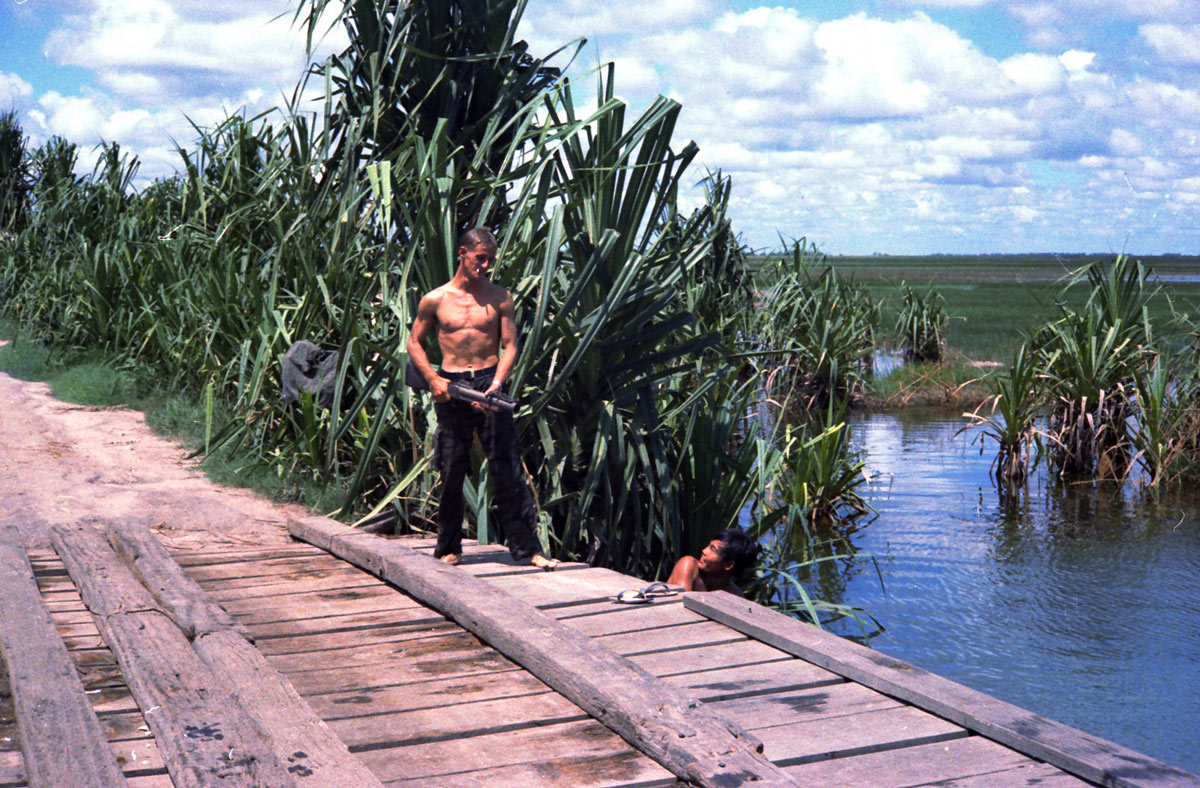
How Miller in Cambodia, after a swim, posing with M79 and CIDG.
This issue contains part one of three. Covered here are some of the ground and water activities from the Angels Wing south. Next month we will cover to the north — to include ARVN, U.S. infantry, SOG and Special Forces A-camp participation. Stay tuned for the June Sentinel for some notable and atypical activities by CCS, and more.
About the Author:
How Miller has served as the editor of Chapter 78’s Sentinel since January 2021. Read How’s Member Profile to learn more about him.
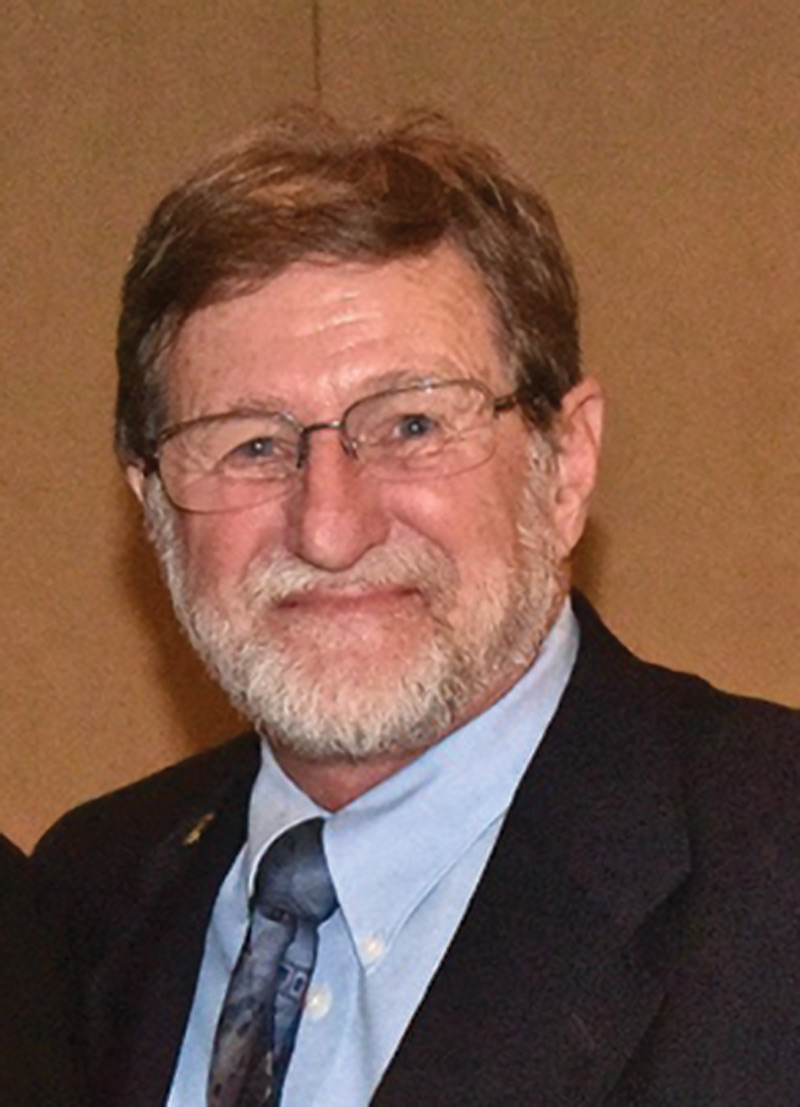
Leave A Comment